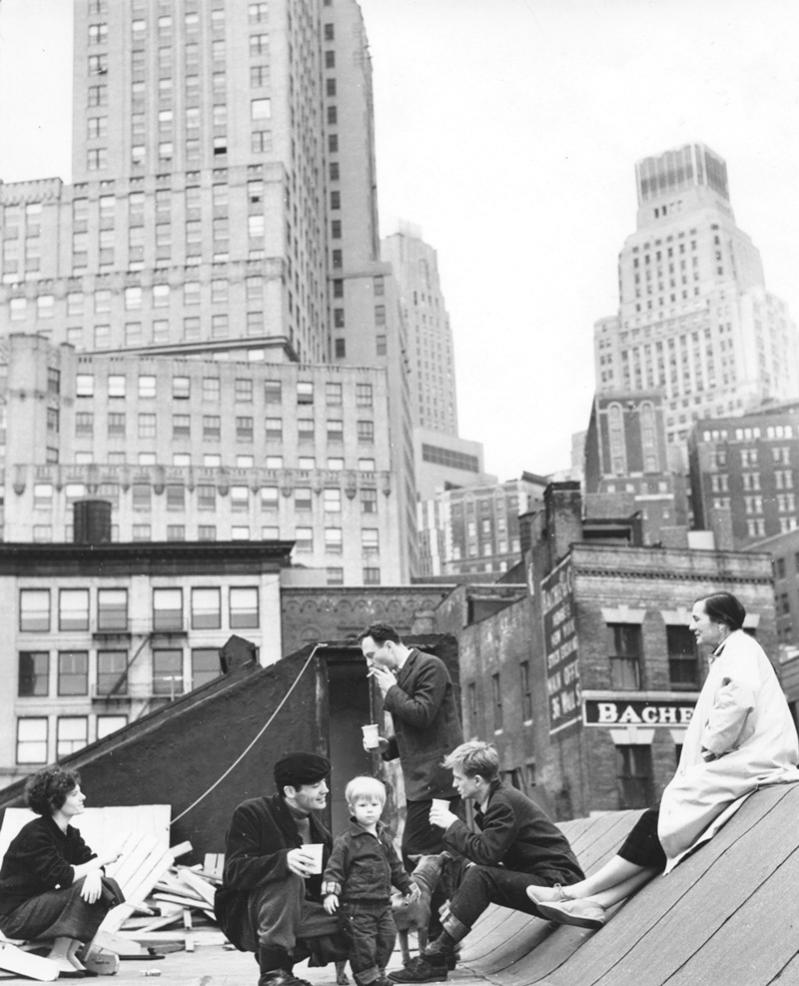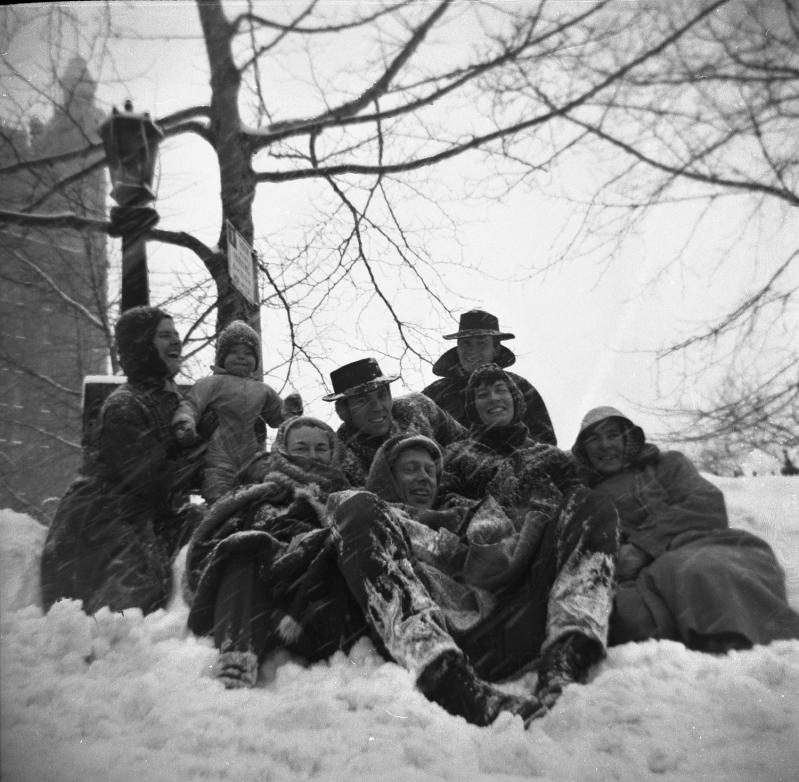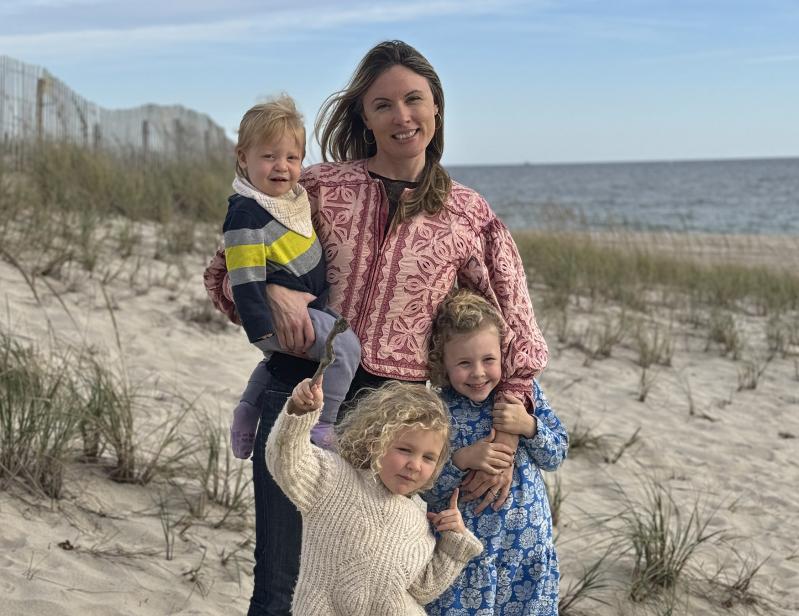Prudence Peiffer was "just pregnant" with her first child when she first began a book project on the artists who lived in old sailmakers' lofts at Coenties Slip, at the very bottom of Manhattan, from the mid-1950s to the mid-1960s. Her daughter, Clementine, now 6 and one of three children, along with Charlie (3) and Clive (15 months), is a living testament to how long it can take to pursue such an enterprise while juggling parenthood and a full-time job as director of content at the Museum of Modern Art.
"The Slip" was published in August and has received a warm reception from the art world and book critics. The book is notable for many things, not the least of which is its many connections to the South Fork. One of the chief primary sources of her research came from talks she had with Jack Youngerman at his Bridgehampton farmhouse in the years before his death in 2020. He and his wife at the time, the French actress Delphine Seyrig, were two of the artists living at Coenties Slip who were her focus, along with Ellsworth Kelly, Robert Indiana, Agnes Martin, James Rosenquist, and Lenore Tawney. Rosenquist had ties to the area as well, having lived here in the years after he left the Slip, from 1964 to 1970.
"Coenties Ship," a sculpture by Bryan Hunt, who divides his time between the city and Wainscott, stands in a park that was formed by the remains of the original street. Coenties Slip now runs from Pearl Street to an area where skyscraper construction beginning in 1967 eliminated the blocks to the east.
Ms. Peiffer grew up in Southampton, as did her father. Her mother began spending summers there in the 1950s. While they were in college, she at Smith and he at Colgate, her parents met while they were both working at Southampton's Bathing Corporation. They married soon after graduating, raising Ms. Peiffer and her three siblings in a caretaker's house on an estate. Around 10 years ago, she and her husband, Charles Fulford, bought her great-grandfather's Southampton house, and they head east for weekends and summers.
From a young age, she realized the opportunities that growing up in an area steeped in arts and letters afforded her. Her own summer work experience at the Parrish Art Museum helped inspire an art education that stretched from her undergrad years at Yale to graduate school and a doctoral program at Harvard, followed by a postdoctoral fellowship at Columbia University.
"I didn't get my first job until I was 30," she said with a laugh in a recent interview, "because I was in graduate school for my 20s, basically."
The subject of her book first came to her attention during her studies, and really began to percolate while she was a senior editor at Artforum magazine in the mid 2010s. "I studied art for a very long time, and when Coenties Slip would come up it was this little footnote: 'Oh, you know, artists were living there for a minute.' "
Then a few exhibitions and books emerged that either touched on or focused on the site and what it meant to the artists who lived there, including Nancy Princenthal's biography of Agnes Martin, published in 2015.
She found herself wanting to know more about its history. Having given several book talks in the wake of publication, she noted that lifelong New Yorkers have told her they had no idea Coenties Slip existed. At the time it first piqued her interest, she didn't really know where it was.

"I wanted to know why were the artists living there. How did they get there? What was this place? Why was it called Coenties Slip? Why were they only there for a brief period of time? Why was it such a diverse group of artists in terms of gender and sexuality? And most importantly, what they were doing" across this "very, very diverse group."
The book addresses all of that, tracing its history back to 17th-century Dutch settlers and to a time when it was considered the center of the city in the 18th and early 19th centuries. It was one of 12 slips, cut into the riverfront where ships would anchor, appearing as if they were growing out of the city's streets. Their crews would unload their wares into marketplaces at the head of the slips to trade these goods. Herman Melville referred to Coenties Slip in the opening lines of "Moby-Dick."
The artists who made their way there were working in anything but Abstract Expressionism, which was still dominant in the city at the time, choosing instead abstraction rooted in Europe as well as representational painting, fiber art, film, theater, and sculpture. It was all happening, Ms. Peiffer said, on "this obscure little three-block street on the very edge of Manhattan" perched on the East River, where all of their lofts had a water view.
"Agnes Martin has this incredible quote where she talks about being able to see the sailors' faces as the ships were going by."
They did not share a lot in common other than a place of residence, the ones closest in working methods being Indiana and Rosenquist in what were proto-Pop moments. Kelly and Youngerman were painters who befriended each other in France and were informed by what they saw there. While some were inspired by their fellow artists at the Slip, it was brought on more by proximity than any kind of full-on trend or style happening there at the time.

Living under abject conditions, in commercial spaces that they were not legally allowed to stay in overnight, with jerry-rigged showers, sketchy electricity, and holes in the floors that sent water down to the lofts below when bathing or cleaning, their shared primitive existence fed their social bonds. In the book are photos of the artists sharing meals in their lofts, romping in the snow, and a couple by Hans Namuth of them gathering on the roof in a break from their work.
This collection of disparate yet connected creatives gave rise to the book's theory and theme regarding place. In it Ms. Peiffer notes that the artists there were finding themselves at that time, even with ages ranging from 24 to 50. Case in point: The Slip was where Robert Clark changed his last name to Indiana, thereby birthing an eventual Pop icon.
"It was very affordable housing and a bigger space to work," she said. It also offered "the kind of apartness that allows for experimenting and trying new things. It just gave them a little bit more freedom to do that away from prying eyes."
In the book, she writes, "Place is an undervalued determinant in creative output. . . . To think of an artistic group in terms of place is to write a different history of art, one that can be more inclusive, more open to serendipitous interaction, and can also explain more of the cultural, emotional, and financial context behind any art object."
Typically art history is seen as a series of movements, clear progressions from one thing to another, everyone picking up on the moment's zeitgeist and running with it in individual interpretations not far removed from members of their chosen circle. Ms. Peiffer acknowledged that "we have tried to make history a little bit neater and have a more clear progression, because it helps us to see it better and to also trace certain really important through lines."
Yet, as she learned more about the subject, "I did really feel like this moment helped to show that there were limits to thinking that way, and that I wanted to present a bit of a messier history."

